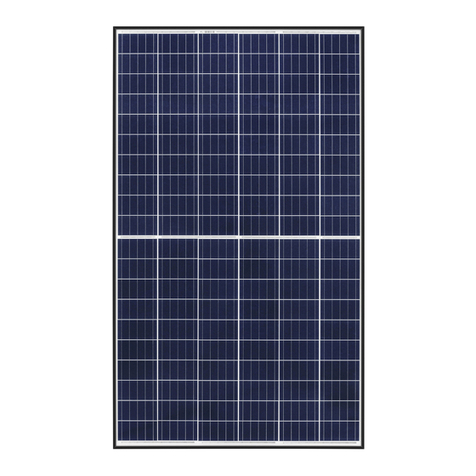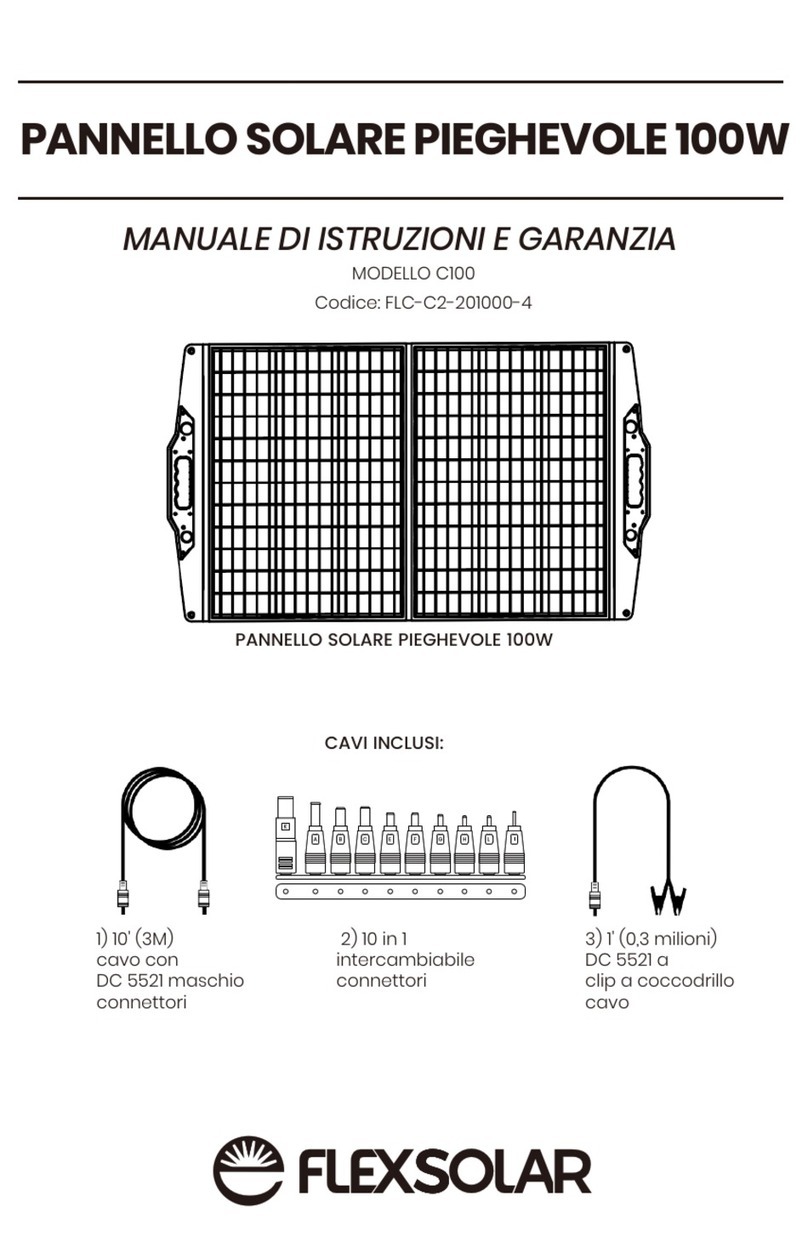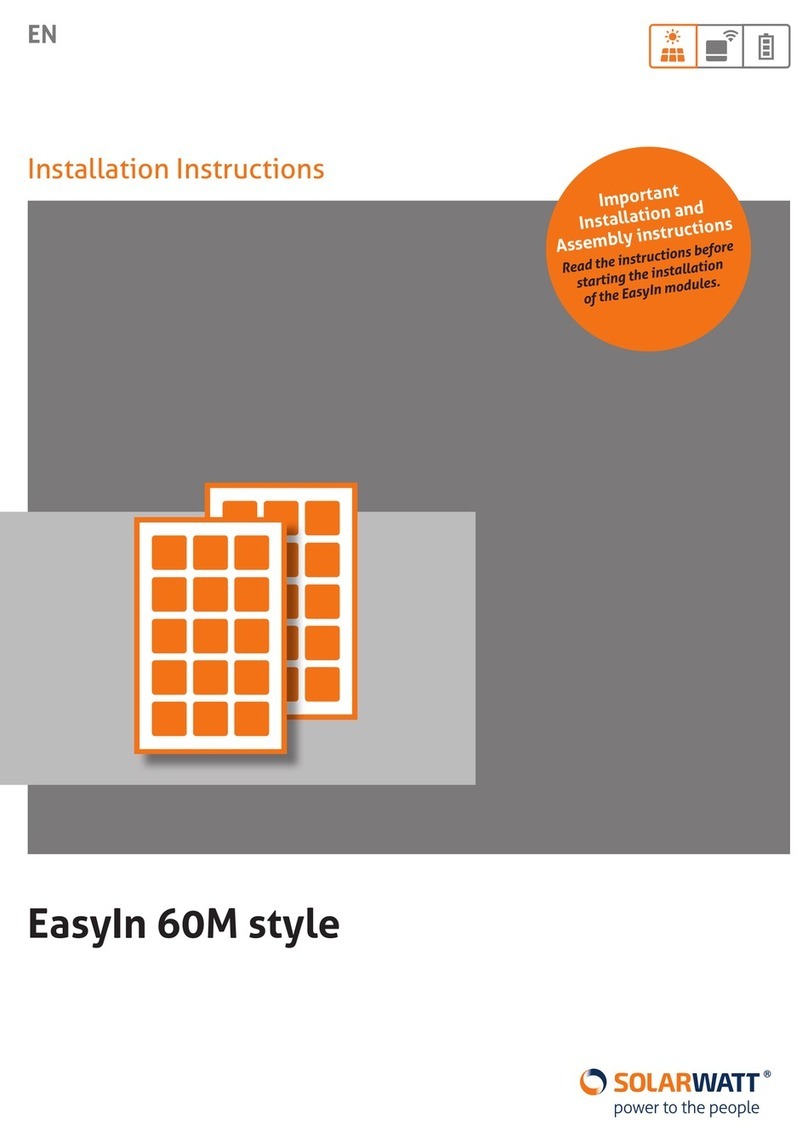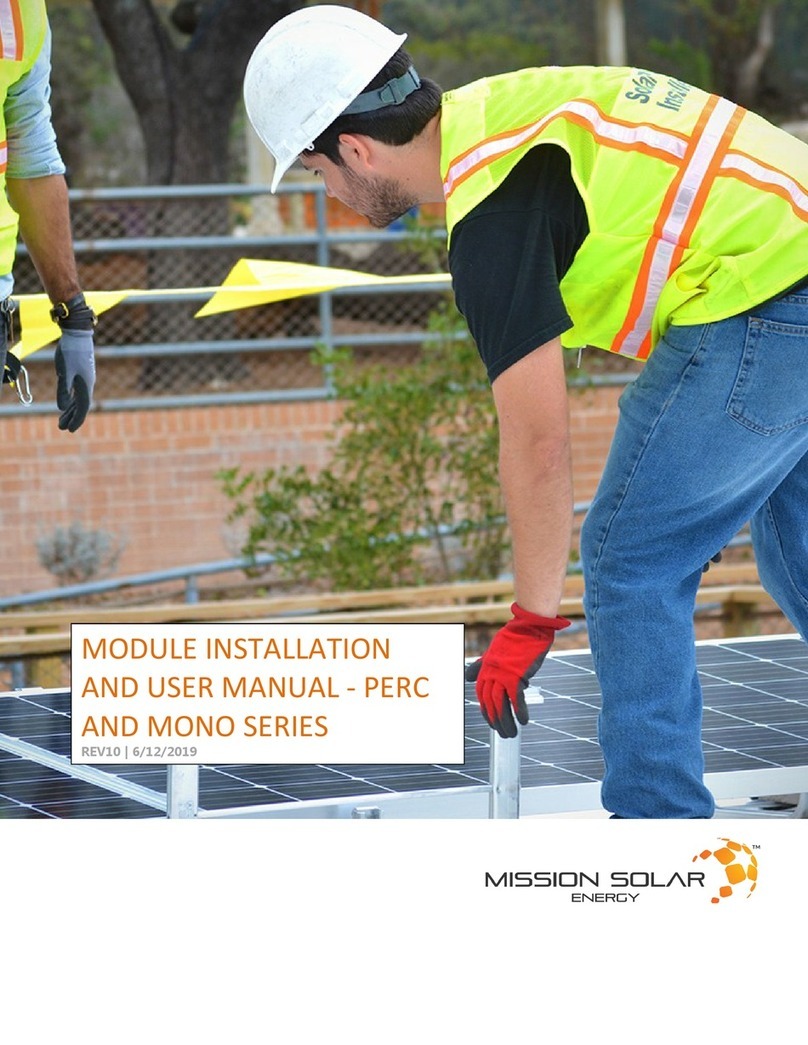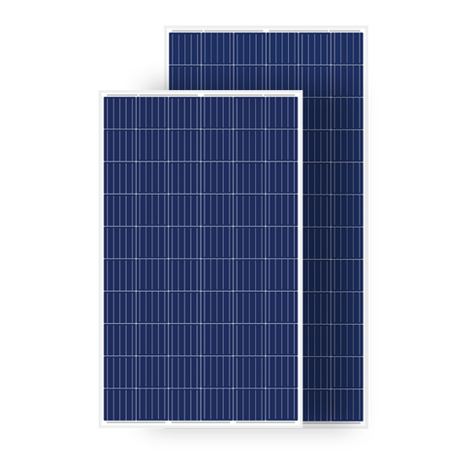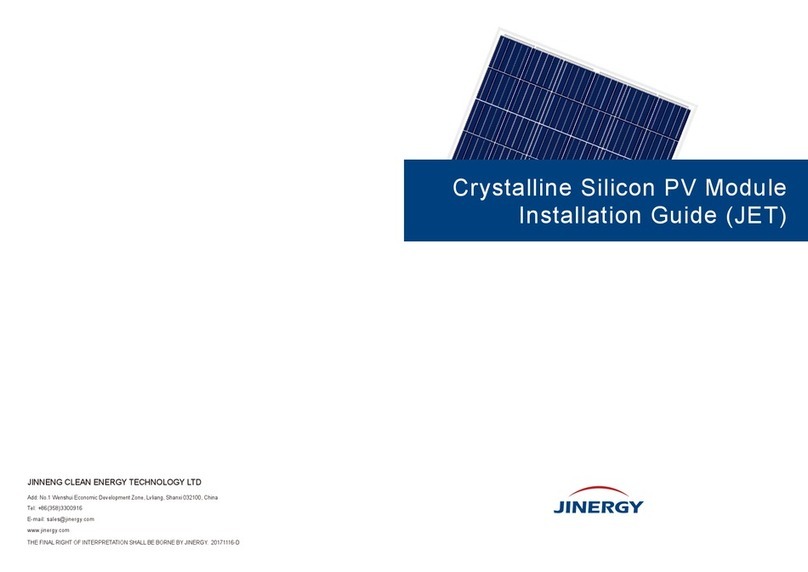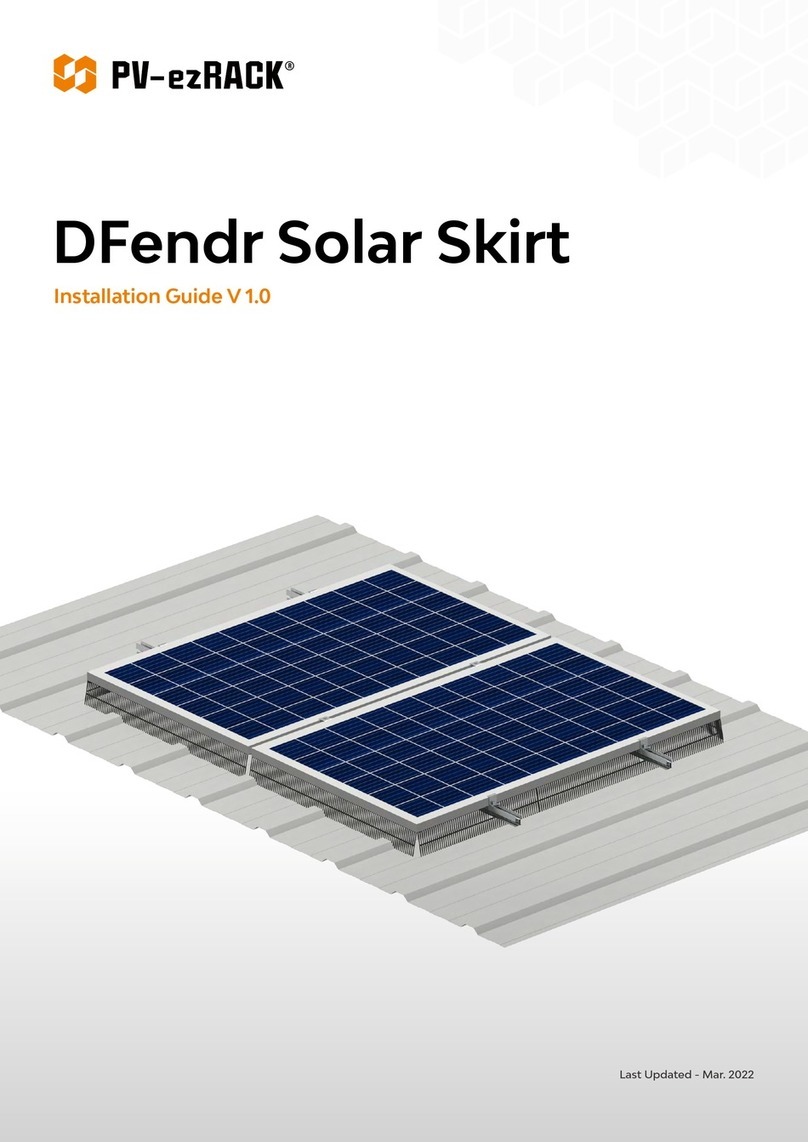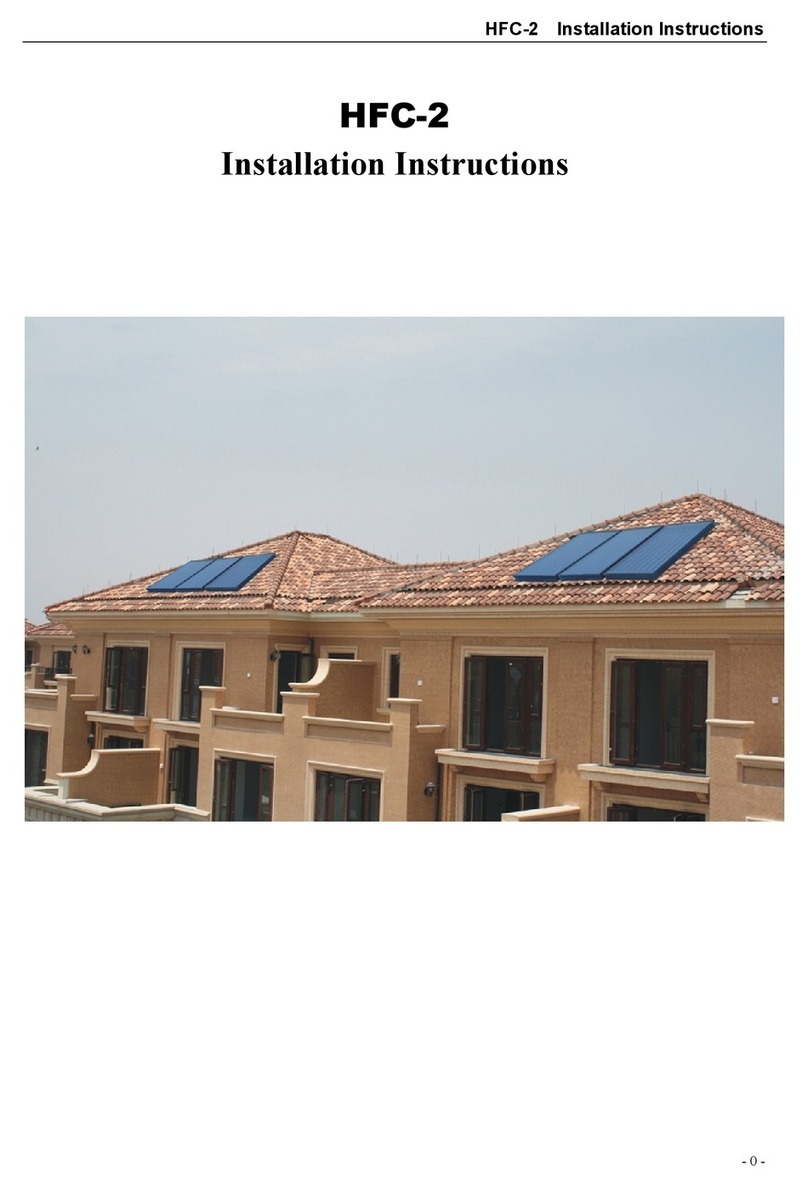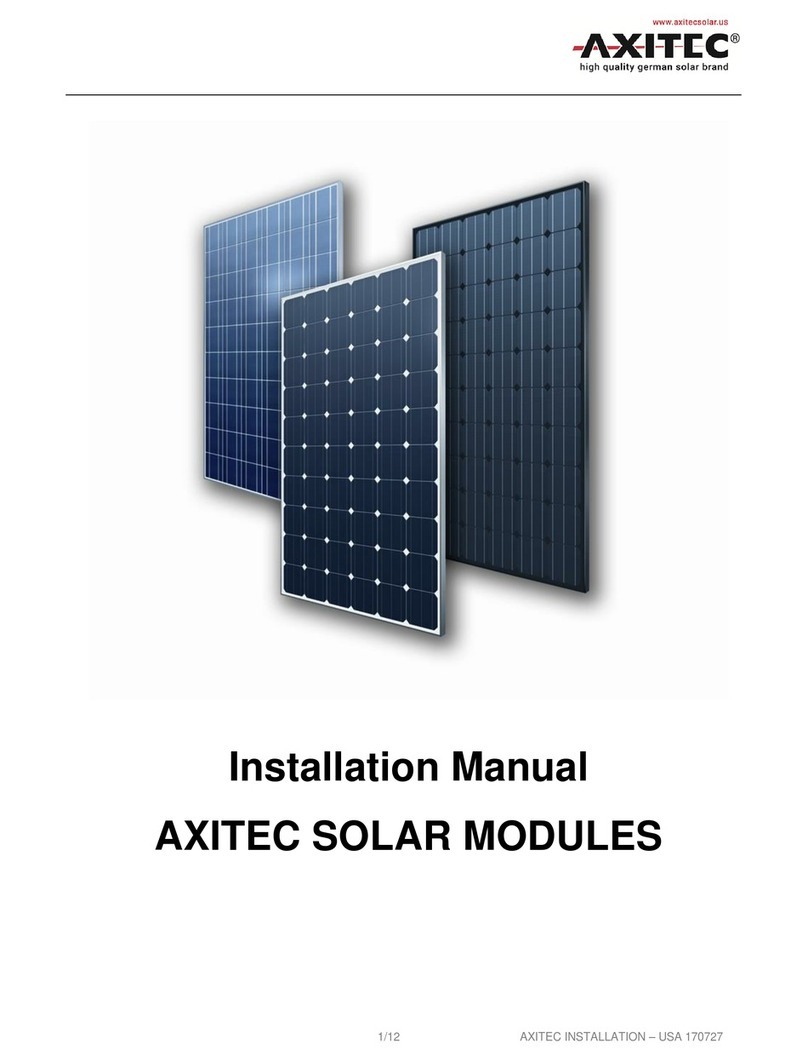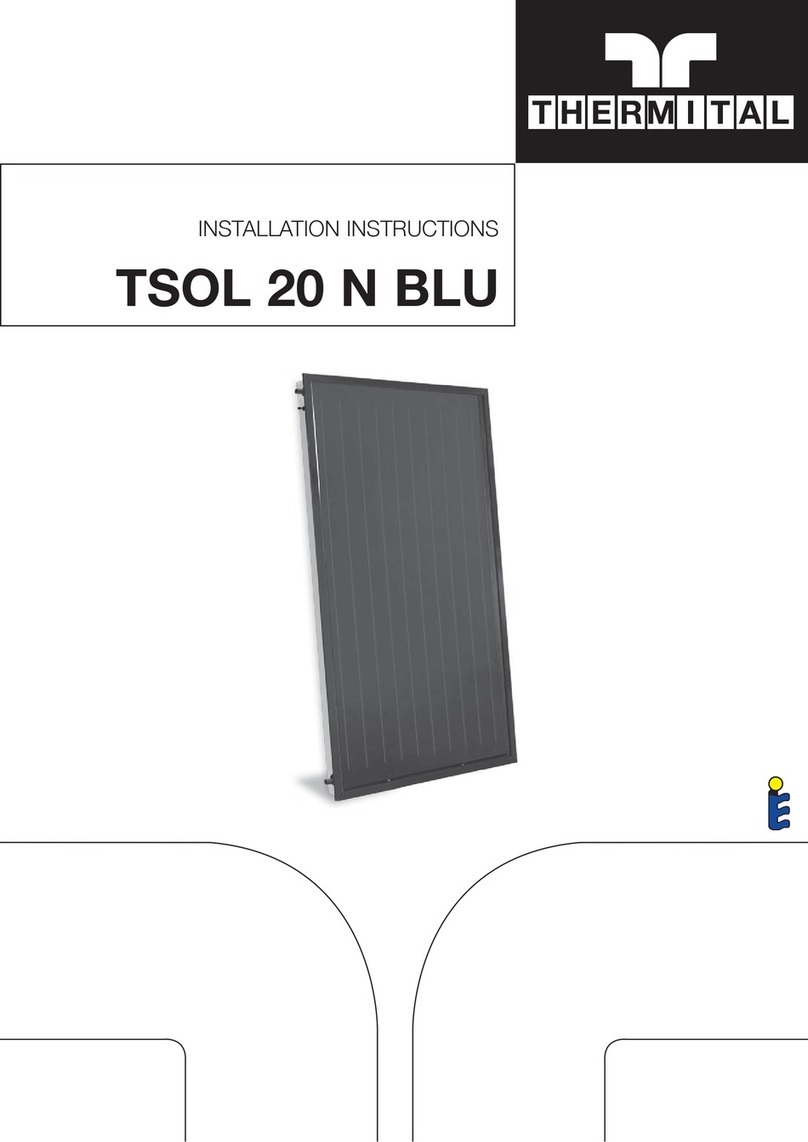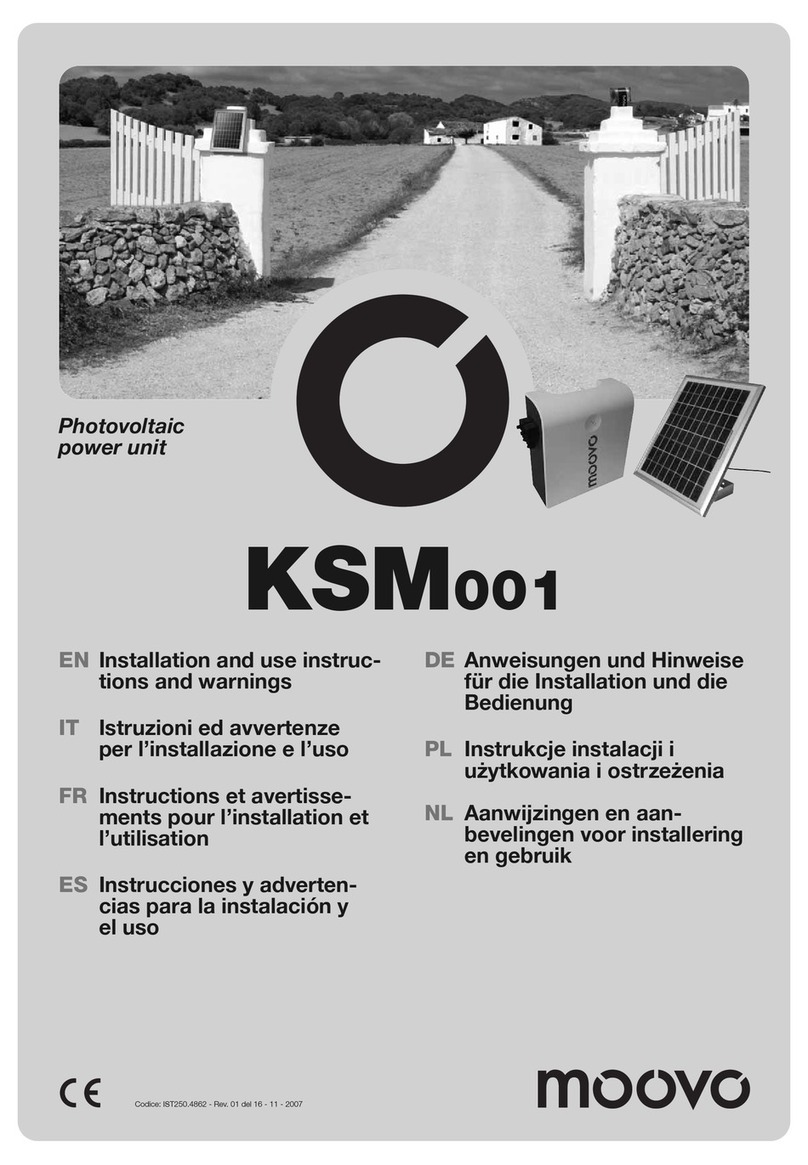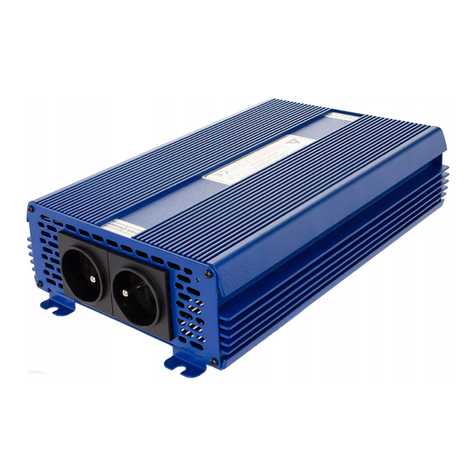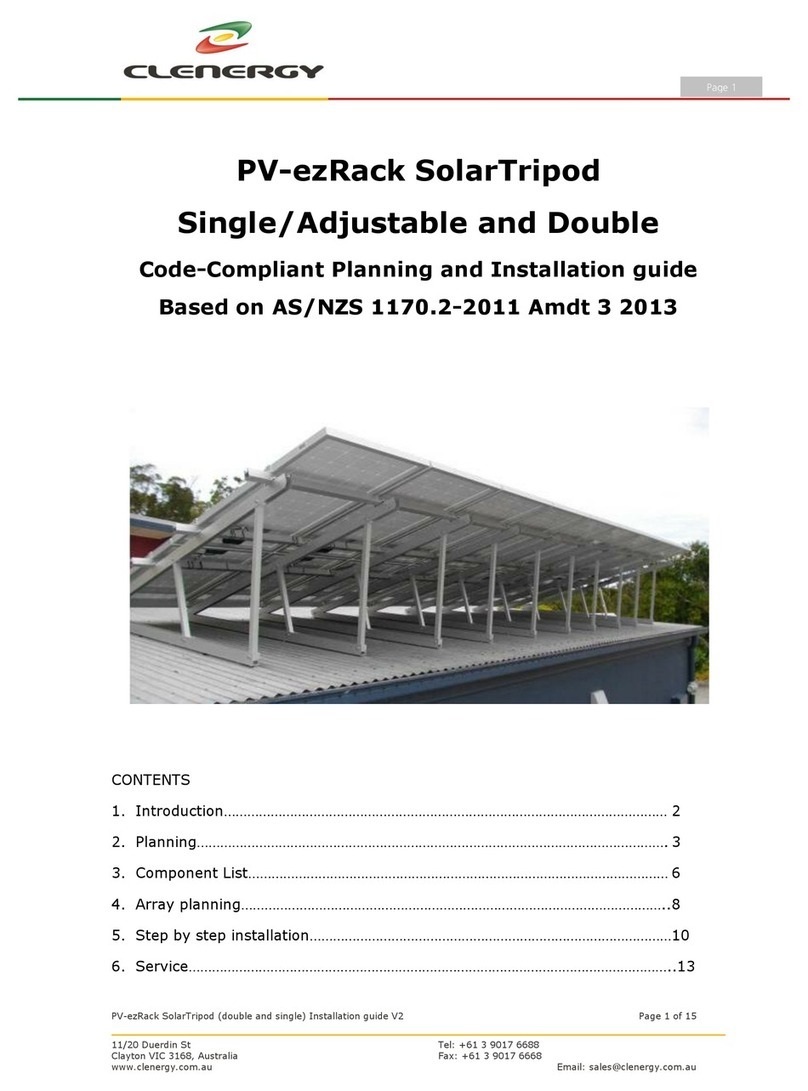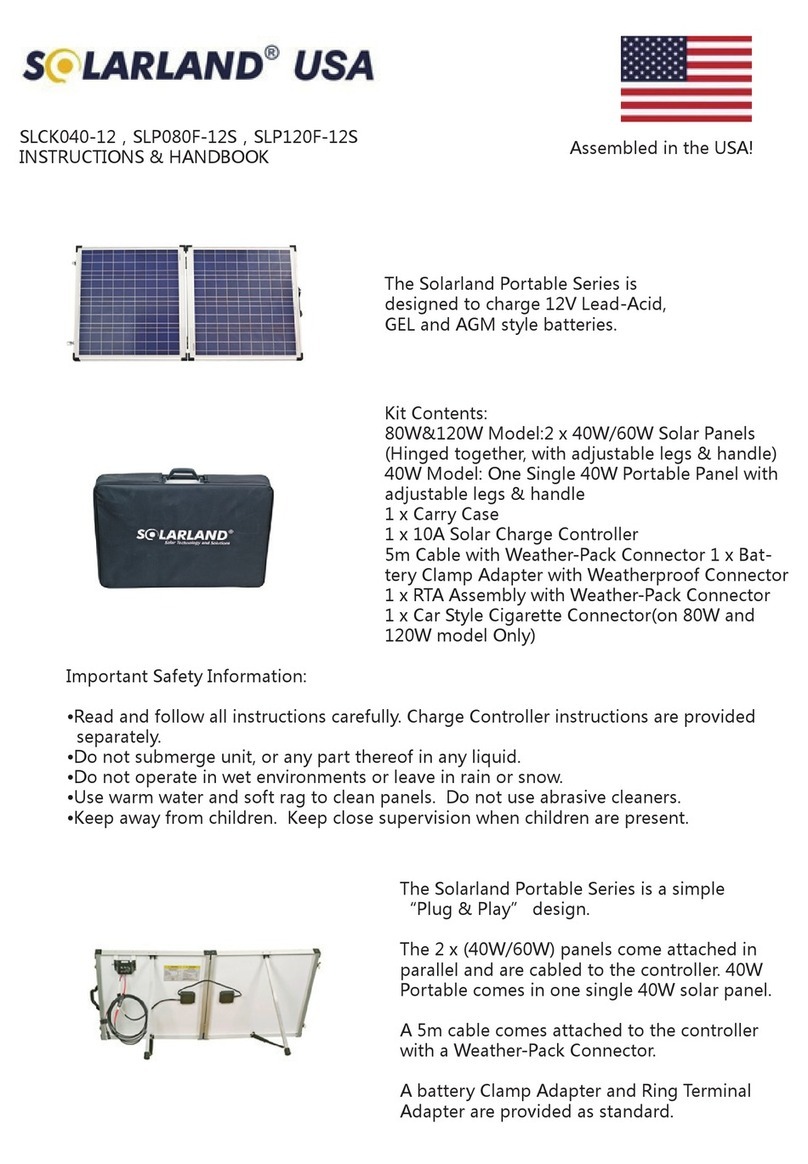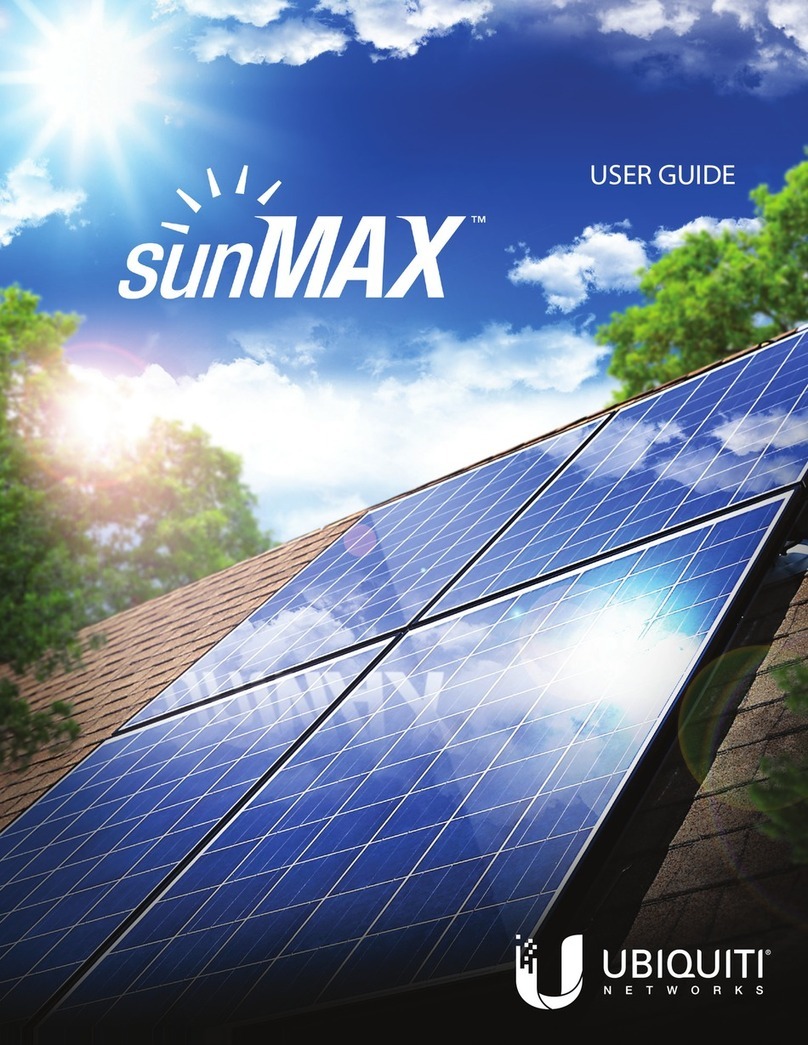
2.1.5 Do not shade portions of the PV module surface from the sun for a long period of time. The shaded cell may
become hot (hot spot phenomenon), which can result in solder joints peeling off.
2.1.6 Do not clean the glass surface with chemicals.
2.1.7 Do not drop the PV module or objects onto the PV module.
2.1.8 Do not concentrate sunlight on the modules or panels.
2.1.9 Do not attempt to disassemble the modules, and do not remove any attached components from the modules.
2.1.10 Do not scratch or hit at the back sheet, the glass and the terminal box. Do not pull the cables or touch them
with bare hands.
2.1.11 Keep the PV module packed in the carton until installation.
2.1.12 Do not use modules near equipment or in places where flammable gases may be generated.
2.1.13 Photovoltaic system must be closed before electrical maintenance. Improper maintenance may cause fatal
electric shock or burns.
2.2 Installation Safety
2.2.1 Use the special sucker when handling and installation modules, do not move modules with bare hand to prevent
slip.
2.2.2 Wear protective head gear, insulating gloves, safety shoes, and insulated tools when installing the modules.
2.2.3 Do not install the modules in rain, snow, or otherwise wet or windy conditions.
2.2.4 Completely cover the PV module surface with an opaque material during PV module installation and wiring to
prevent accidental charge buildup.
2.2.5 Plug in connectors tightly when working on wiring.
2.2.6 Due to the risk of electrical shock, do not perform any work if the terminals of PV module are wet.
2.2.7 Do not touch the terminal box and the end of output cables (connectors) with bare hands.
2.2.8 Do not unplug the connector under load.
2.2.9 Do not work alone.
2.2.10 Wear a safety belt if working far above the ground.
2.2.11 Do not wear metallic jewelry, which can cause electric shock, while installing or troubleshooting the PV
system.
2.2.12 Follow the safety regulations for any and all other system components, including wires, connectors, charging
regulators, batteries, inverters, etc.
